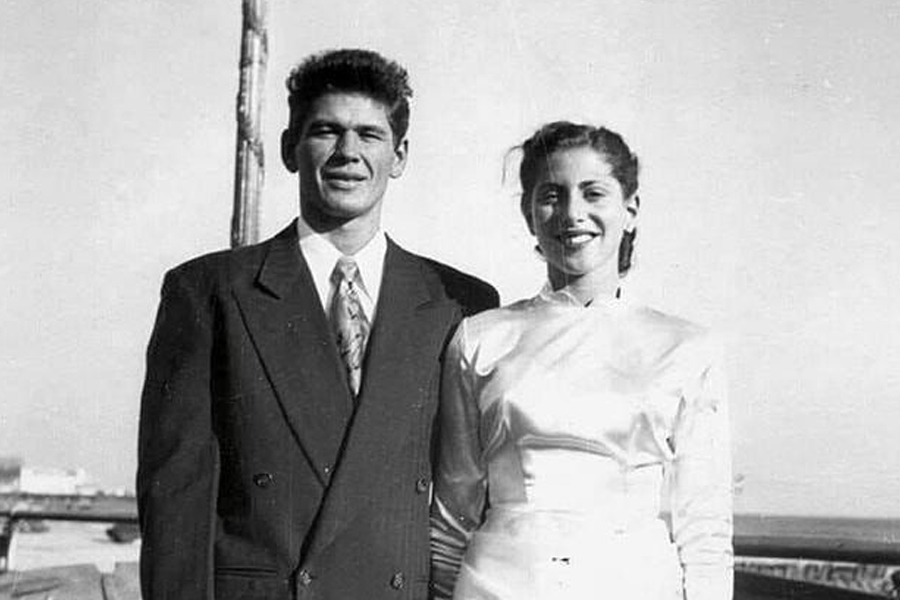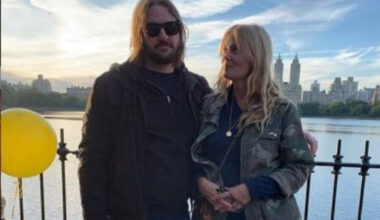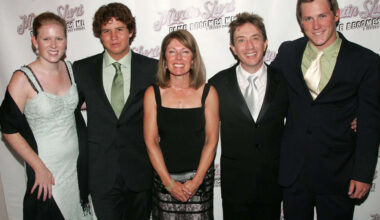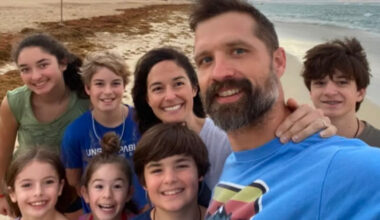Basic Information
| Field | Detail |
|---|---|
| Name | Harriet Tendler |
| Also known as | Harriett Tendler; Harriett Bronson |
| Born | 1929 (year commonly reported) |
| Died | 1 November 2020 (reported on public memorials) |
| Nationality | American |
| Notability | First wife of actor Charles Bronson; radio talk-show host; author of “Charlie & Me” |
| Occupations | Radio host (KABC, KIEV, KGIL); author; former actor |
| Spouse | Charles (Charlie) Bronson, married 1949; divorced 1965 |
| Children | Suzanne Bronson; Tony Bronson |
| Major publication | Charlie & Me (2010/2011) |
| Primary locations | Pennsylvania; Los Angeles, California |
Early Roots and a Fateful Meeting (late 1940s)
Before Hollywood and headlines, there was a young woman from Pennsylvania, the only child of a widowed Jewish dairy farmer, who dreamed in stage lights rather than sunrise milking schedules. In the late 1940s, while studying drama in Philadelphia, Harriet Tendler met a fellow student with a hard-scrabble edge and a fierce work ethic: Charles Dennis Buchinsky, the man the world would later know as Charles Bronson. Their lives knit together in the crucible of ambition and scarcity, two actors betting on possibility.
A Marriage Forged in Lean Years (1949–1965)
Harriet and Charlie married in 1949, just as postwar America was reshaping itself. The early years were lean. She worked, he hustled, and both tried to pry open the same stubborn doors. The marriage produced two children—Suzanne and Tony—and stretched across the 1950s as Bronson moved from uncredited parts to sturdier roles. For sixteen years they built a household around long days, small breaks, and the steady drumbeat of auditions. Success arrived slowly for him; for her, it demanded reinvention.
The California Crucible
California became their proving ground. The early 1950s film lots and TV sets were their second home—half factory, half dream. As Bronson’s trajectory arced upward, Harriet shouldered family life and the uncertain economics of the business. The marriage reached its endpoint in 1965. That year closed one chapter and began another: he would move into international stardom; she would write a new script for herself.
On the Air: Reinvention in Radio (1970s–1980s)
After the divorce, Harriet Tendler did something many people talk about and few actually do—she reinvented herself, microphone in hand. On the airwaves of Los Angeles, including KABC, KIEV, and KGIL, she carved out a persona with a husky, unmistakable voice. Her shows threaded commentary, interviews, and a steady curiosity about people. Radio rewarded her resilience. Listeners met not an “ex” but a woman steering her own narrative, quick with insight and brisk with sentiment. The city’s talk-radio ecosystem could be bruising; she met it with clear eyes and a steady cadence.
Decades later, Harriet published Charlie & Me, a memoir that is equal parts courtship chronicle, survival manual, and dispatch from the front lines of fame’s shadow. She wrote about the long apprenticeship of becoming, about the toll and tenderness of marriage, and about the cold shock of a life reset. The book is not a tabloid tell-all; it’s steadier than that—measured, specific, and attuned to the texture of real days. Following publication, she appeared at bookstores and in interviews, fielding questions with an economy of words that felt quintessentially radio: concise, candid, and quietly unsentimental.
Family, Privacy, and the Shape of a Life
If fame is a floodlight, Harriet lived just outside its burn. Her two children, Suzanne and Tony, kept relatively private lives. After Harriet and Charles separated in the 1960s, his later marriages made headlines; hers did not. That is its own kind of achievement. She guarded her family’s privacy while building a second act on air. The through-line, evident across decades, is her instinct to work: in studios, in bookstores, and in the daily routines that keep a life upright.
Legacy and Remembrance
Public memorials report that Harriet Tendler died on 1 November 2020. For many, her name surfaces in the margins of a famous man’s biography. Yet her story rewards a closer look. It’s a portrait of endurance: a young actress who became a working mother; a former spouse who refused to be defined by the hyphen in “ex-wife”; a voice on Los Angeles radio who built rapport one caller at a time; and a writer who captured, without ornament, the cost and grace of starting over.
Family at a Glance
| Name | Relationship | Notable details |
|---|---|---|
| Charles (Charlie) Bronson | Husband (m. 1949; div. 1965) | Actor; born 1921, died 2003; international film career |
| Suzanne Bronson | Daughter | Kept a private profile; known publicly as Harriet and Charlie’s child |
| Tony Bronson | Son | Also private; named in public biographies of Charles Bronson |
| Harriet’s parents | Parents | She was the only child of a widowed Jewish dairy farmer in Pennsylvania |
Selected Timeline
| Year/Date | Event |
|---|---|
| 1929 | Birth year commonly reported for Harriet Tendler |
| Late 1940s | Meets Charles Dennis Buchinsky in Philadelphia drama school |
| 1949 | Marries Buchinsky (later Charles Bronson) |
| 1950s | Family relocates to California; Bronson’s career gathers momentum |
| 1965 | Divorce from Charles Bronson |
| 1970s–1980s | Builds a talk-radio career in Los Angeles (KABC, KIEV, KGIL) |
| 2010/2011 | Publishes memoir “Charlie & Me” and appears at readings and interviews |
| 1 Nov 2020 | Reported date of death on public memorials |
Craft, Voice, and the Art of the Second Act
Harriet’s radio tenure is a masterclass in second acts. Radio is theater without the curtain; every pause can feel like a cliff. She learned to wield silence as punctuation and curiosity as compass. The craft required stamina and a listener’s ear, the ability to hold a caller’s story and move the hour forward. That same narrative discipline animates her memoir—pages paced like good radio, stories shaped for clarity rather than spectacle.
The Memoir’s Perspective—Close-Up, Not Close-Quarters
Charlie & Me reads like a long, steady camera shot: intimate without claustrophobia, informed without score-settling. Dates and domestic details anchor the emotional arc—lean apartments, shared ambitions, and the relentless math of bills and dreams. The break, when it comes, is neither melodrama nor footnote; she frames it as a pivot toward a life she chooses to author. Many memoirs reach for melodramatic thunder; hers favors weather you can feel: gray mornings, practical decisions, a forward tilt.
What Endures
In biographies of Charles Bronson, Harriet is often the first life chapter, sometimes only a paragraph. But the full story reveals a woman who persisted with grit and clarity. She supported a family through uncertain years, changed careers, mastered a new medium, and told her story plainly. It’s the kind of legacy that resists inscription on billboards yet lingers where it matters: in the shape of a life well-steered.
FAQ
Who was Harriet Tendler?
She was an American radio host and author best known as the first wife of actor Charles Bronson and the writer of the memoir “Charlie & Me.”
When did Harriet Tendler and Charles Bronson marry and divorce?
They married in 1949 and divorced in 1965 after a sixteen-year marriage.
Did Harriet Tendler have children?
Yes, she had two children with Charles Bronson: Suzanne and Tony.
What radio stations did she work for?
She hosted talk-radio programs in Los Angeles, including on KABC, KIEV, and KGIL.
What is “Charlie & Me” about?
It’s her memoir recounting her marriage to Bronson, their breakup, and her path to reinvention as a radio personality.
When did Harriet Tendler pass away?
Public memorials report her date of death as 1 November 2020.



